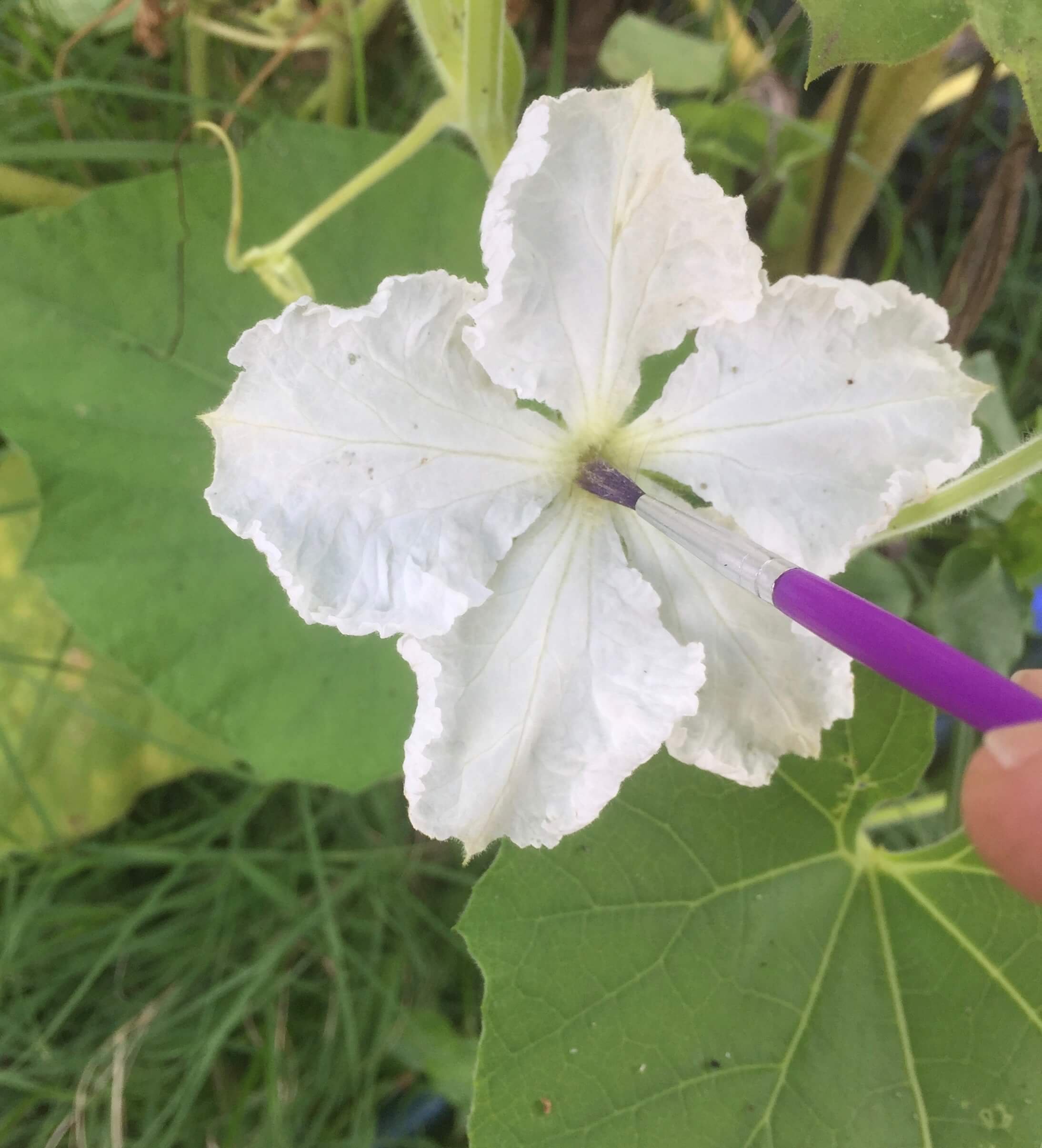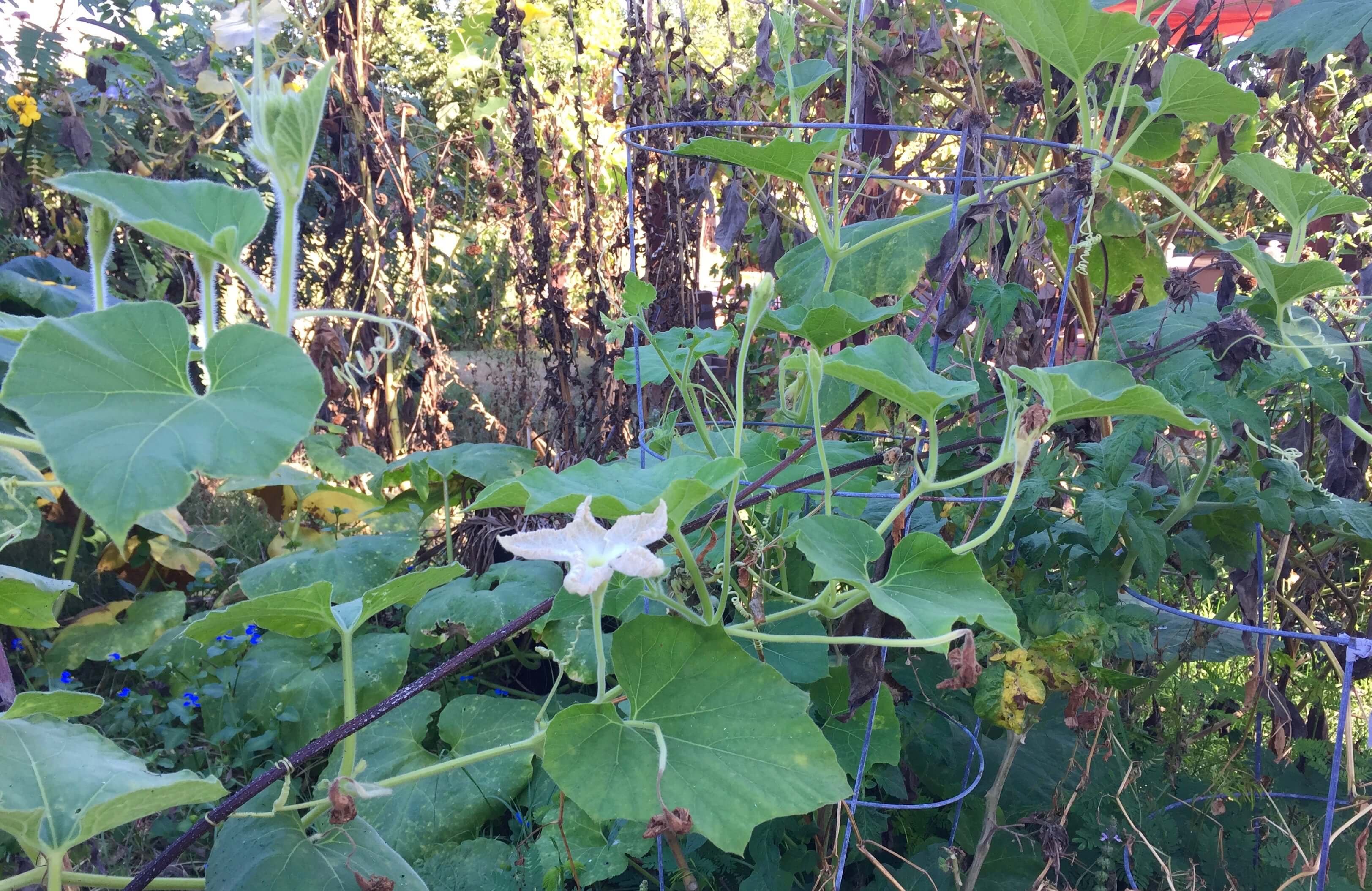It All Began With a Seed
This story begins with my love for seeds and for growing things I have never seen before.
That can be a good thing, or not.
One problem of planting a bunch of seeds of varieties unknown to mankind - I mean to this woman - is that she can't tell if its a weed or if its a plant.
Or which of the many things planted actually came up.
These are the seeds which got it all started.

How they came to me, I don't really remember. Maybe I bought a seed pack. Or I picked some up at a seed swap. Or someone just gave me some. All of those are frequent events in my life.
To tell you the truth, the seeds you see in the pictures and the ones I used to grow this plant came from a gourd I grew last year and smashed up to get the seeds.
And this is what grew from these seeds.
The Plant
Well, this one is obviously a cucurbit. When I first grew it, I told everyone who asked that it was a snake gourd.
And many asked since the fruit grows very long - several feet - and I had them hanging all over the place.
But when I checked in with my friend google, what I found there does not look at all like what I was growing. See for yourself
https://en.wikipedia.org/wiki/Trichosanthes_cucumerina
This is what the flower of my gourd looks like.
It is a white flower and blooms mostly at night. When I first started growing them, I saw so many flowers developing and got excited about a huge harvest.
Only, not even one flower set fruit!!
Talk about being disappointed! I figured that my night flower just didn't have the right pollinator around and that it needed help. Good thing that I had plenty of cheap paintbrushes laying around. I stored one in each area a squash was growing.
Then, at dusk or in the morning, I went to work as a bee or moth or whoever is supposed to do the pollinating job.

It only works if at least two flowers are open. Then a quick dip in the middle of the flower to collect some pollen and from flower to flower I go.
Success!!! We got a baby!!!
And the baby grew.
This is a good size to harvest the gourd. The first picture is as big as you want it to grow to be good to eat. If they get bigger, the get hollow and the flesh gets tough.
The plant is a vigorous grower and has no problem to climb into trees or to spread out all over.

The finished length of the gourds I harvested last year was between 3 and 4 ft. They stayed the light green color you see in the very first plant picture for the longest time and later turned a light brown.
I was going to make instruments from them. The seeds were rattling inside and they sounded a bit like a rainstick. But I neglected to wash them with peroxide upon harvesting and store them on a rack without touching each other until completely dried. They all got some kind of fungus which made them look ugly. That is when I learned what I should have done.
Oh well. I got a lot of seeds instead.
But, I have no idea what seeds I have. They are the babies of a nameless plant. Snake gourd or serpentine gourd is out (and that was such a cool name!)
The wikipedia picture of the squash shows a dark green colored fruit, a different flower, and tells of a different taste.
Whatever I have, it is delicious when eaten young and it is impressive when grown to maturity.
And that is good enough for me.
Where else to find me
Listen to our podcast here: http://www.sustainablelivingpodcast.com/
Support us on Patreon: https://www.patreon.com/user?u=2723500
Follow us on Instagram: https://www.instagram.com/sustainablelivingpodcast/
Twitter: https://twitter.com/MarianneEWest
Facebook: https://www.facebook.com/sustainablelivingpodcast/
Pinterest: https://www.pinterest.com/sustainable0019/
YouTube: https://www.youtube.com/channel/UCA73SuaMBnBIaB5OdiL_y6Q/videos?view_as=subscriber
I am also publishing this as a blog post on our website: www.sustainablelivingpodcast.com
